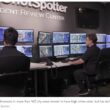Back to school
Emergency communications professionals soon will have another tool in their boxes, as the Department of Homeland Security's Type III Communications Unit Leader training that was formalized two years ago becomes widely available to incident commanders across the country this spring.
The COML training likely is a relief to many first responders, who, while grateful for gear purchased with the influx of homeland security funds over the past several years, may have felt that — in at least some cases — the cart was being put before the horse.
“The goal now is to get local people trained,” said Chris Baker, fire captain with the Roseville (Calif.) Fire Department and one of the architects of the new course. “This is critical because a lot of [DHS grant] money has been spent on equipment, and much of it has been overseen by local IT staff and other non-operational people.”
Baker said the course amounts to codifying many of the procedures that wildland firefighters have been using for years to manage their incidents, including a strong emphasis on preparation and the interdependence of neighboring agencies when it comes to leveraging the power inherent in new communications technologies.
“In the end communications is all about people and all about planning,” Baker said. “You could have no equipment and actually succeed if you have the right amount of people and the right amount of planning. You could have all the equipment in the world, all the gateways and caches, but if you don't have someone who knows how to operationally bring it all together in an incident, then you're done.”
In 2007, the DHS Office for Interoperability and Compatibility funded the initial development of the COML course in response to the need for standardized communication unit training. In February 2008, public-safety practitioners from around the country met in Seattle to discuss the course, along with officials from the DHS Incident Management Systems Integration Division and the Office of Emergency Communications. The group made several recommendations that modified course pre-qualifications, curricula, materials and policies. Additionally, a position-specific task book for COML was developed to serve as an assessment guide. Course-takers may include activities within the previous three years to meet the task book requirements of practical, hands-on experiences or skills.
An important training aspect that was identified early on was the need for a basic introduction that would help would-be COMLs get up to speed before they settled in for the rest of the course. It was feared that candidates who met the operational-experience prerequisites might shy away from the training if they felt they lacked a sufficient technical understanding of communications systems needed to get started, or that only “radio geeks,” long on technical expertise but short on hard-won emergency operational experience, would populate class ranks.
As a result, an “awareness-level” independent study course was developed. The course, which is available online and takes two to four hours to complete, helps bridge the gap for first responders who have lots of incident experience but less with managing radios and developing communications plans.
Experts say the combination of practical experience with technical knowledge is critical in a communications team leader, and harder to come by than many people would expect.
“If you think about the people in any organization who you look to for [operational] direction, those tend to be older people, with more experience, who have been through it once or twice before,” said Don Carnahan, a trainer and consultant from Los Angeles who recently retired after 25 years as a firefighter.
“At the same time, it takes a lot of work just to stay up on the very latest in [communications] technology,” Carnahan continued. “Often the people who have the most up-to-date technical expertise are younger because they get so much of that training at the very beginning of their careers. These younger people really know their way around the gear, but they may not have been through enough incidents first-hand to know what's valuable or important from an operational standpoint.”
Carnahan said it takes experience to know what features of a new radio or system will be truly useful in an emergency situation, and how to strike the right balance between feature-rich complexity and life-and-death usability.
“It's one thing to configure a radio or a system in a test in a classroom or parking lot, and [say] ‘Look at all the gee-whiz stuff we can do,’” he said. “It's another thing completely to bring that functionality into the real world of an incident, where these features may not all work for technical reasons, let alone be simple and reliable enough for the [emergency] crews to work with.”
Dan Hawkins, director of public safety programs for SEARCH, The National Consortium for Justice Information and Statistics in Sacramento, Calif., said the COML training patches a major hole in national emergency preparedness. According to Hawkins, the National Incident Management System [NIMS] Integration Center issued an alert in 2005 that required incident command system (ICS) training guidelines to be consistent with NIMS ICS training conducted by the DHS and the training of the National Wildfire Coordinating Group (NWCG).
“But DHS did not have standard communications unit training,” Hawkins said. “The NWCG training was the only existing program that was NIMS-compliant, but it didn't apply to other types of emergency response.”
Hawkins said it was a result of this communications training “blind spot” that prompted the NIMS Integration Center to ask SAFECOM to develop the all-hazards COML standard.
Briefly outlined, the course trains responders to be unit leaders and improve communications across the multiple disciplines and jurisdictions responding to a regional incident. Responders who wish to take the course must satisfy several prerequisites, including knowledge of their local communications systems and regional, state and local communications plans. A COML's responsibilities include developing thorough plans for the use of incident communications equipment and facilities, managing the distribution of communications equipment to incident-response personnel, and coordination of equipment installation and testing.
Under NIMS, incident response is categorized into five types, according to an incident's magnitude and complexity; the type of response needed for an incident is determined by the level of resources it requires as well as the incident's duration, from one hour to several weeks. A Type I response would require a multidiscipline, multi-jurisdiction response for a significant duration, such as the response to Hurricane Katrina. Conversely, a Type V response — the least complex, such as a small fire — requires limited, single-jurisdiction resources.
COML 3 training, for instance, is geared toward a Type III event, which would include activation of some or all of the NIMS command and general staff positions, as well as division/group supervisor and/or unit leader positions. According to NIMS guidelines, a Type III incident management team “coordinates a significant number of resources in an extended response until containment/control is achieved, or an expanding incident until [its] transition to a Type I or Type II team.”
The COML course is based on a three-day, 24-hour curriculum, with two trained instructors leading each class. (Instructor training began last year.) Students who successfully complete the course will receive certificates, with copies also sent to the State Administrative Agency (SAA) in the student's state of employment. The SAAs can catalog certified COMLs according to their own guidelines and are responsible for identifying potential course-takers, instructors and a process for COML credentialing.
Thirty seats are available for each class, with travel the responsibility of the state or local agency. However, the Federal Emergency Management Agency Grant Programs Directorate allows Homeland Security Grant Program funds and Interoperable Emergency Communications Grant Program funds to be used for COML training travel, as well as overtime and other backfill expenses, and by SAAs to develop and administer the credentialing processes.
Baker said that what the training really amounts to is an emphasis on preparedness and the establishment of good cross-jurisdictional relationships that can be relied on in an emergency.
“Eighty-five percent of the work at the Type III level is done ahead of time,” Baker said. “It's all in the planning with your neighbors: getting communications plans built ahead of time; getting your templates between the radios with common channels straightened out; determining what frequencies you're going to be on; whether you're going to use gateways, how you're going to use them, who is going to deploy them, and so on.”
As complicated as it may sound, Baker said that developing the course amounted to getting common-sense procedures down on paper so they could be easily taught and reproduced for would-be communications leaders.
“This stuff is all about relationships, about knowing where your resources are and getting them to work,” Baker said. “The most important thing is making sure you have these relationships established ahead of time.
“There are enough variables in any emergency situation,” he continued. “The COML course is about minimizing the stuff that needs to be figured out on the fly, because there will always be plenty of that anyway.”
FOR MORE INFORMATION
DHS has announced COML Type III training sessions through early April in locations nationwide. See www.safecomprogram.gov/SAFECOM/currentprojects/comltraining for specific dates, locations and times.

















